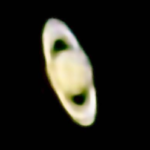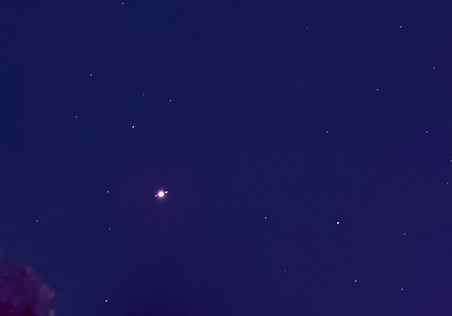Table of Contents
Telescopes have been around for many hundreds of years now, and they are one of the most important tools for observing planets. If you are interested in finding the best telescope for seeing planets, this is the page you need! In this article, I will help you choose the best telescope for seeing planets or photographing them.
First, how does a telescope allow us to see the planets and make out details on their surfaces?
Telescopes are optical instruments that gather and magnify light to observe distant objects.
The larger the aperture of a telescope, the more light it collects and, therefore, the more details you will see on the image of a planet.
You might think that the best telescope for seeing planets would have a large magnification, but this is not correct. If you get a telescope with high magnification, then the image will be larger, but details will depend on the aperture size and quality of the optics.
It is a good idea to think about getting a telescope with 50 to 100x magnification, and as you get better at seeing planets, you can increase this. If you want higher magnification to see more details, then you should look for a telescope with a larger primary mirror in a reflective telescope or a more powerful (larger) objective lens in a refractor telescope.
Getting the best telescope for seeing planets is all about finding one that is practical, has a magnification large enough for your purposes, and yet is not so large as to create distorted or blurry images. This can be a fine balance.
The overall quality of the telescope, including its optics, aperture, and stability, also greatly influences the clarity and detail of the images. Investing in a high-quality telescope with good optics and a stable mount will enhance your planetary viewing experience, regardless of the magnification. Therefore, it’s important to consider the overall performance and reputation of the telescope brand and model before making a final decision.
Blast Off: Choosing the Best Telescope for Seeing Planets
Here are some of the important features of a telescope to consider carefully before buying one to see or photograph planets:
- large aperture
- magnification
- optical quality
- stable mount
- motorized or computerised mounts for tracking planets
- high resolution
The Sky’s the Limit: Unveiling the Best Telescopes for Planet Watching
Choose a telescope from one of the top brands. These include Celestron, Orion, Meade, and Sky-Watcher, to mention some of the best.
| Image | Product | Features | Price |
|---|---|---|---|
 |
| Check Price | |
 |
| Check Price | |
 |
| Check Price |
There are two different kinds of telescopes commonly used by astronomers for seeing planets. These are reflecting and refracting telescopes. There are also different categories of telescopes, such as tabletop models, portable models, and those used in professional observatories.
It is important to think about your budget when choosing the best telescope for seeing planets. Do you want to spend a few hundred dollars, or do you have a larger budget of several thousand to spend on a high-quality planetary telescope?
You also need to consider whether you wish to limit yourself to the observation of planets or whether you are interested in astrophotography. With the right choice of telescope, you will have the opportunity to focus on either of these or perhaps even do both.
Make sure to consider the following to make the best choice:
Get a telescope with a large field of view so you can also photograph or observe objects around the planets. This might include moons or other objects close by.
You want to be able to see the details and features on the surface of a planet, so you’ll need a telescope with good light-capturing ability.
Selecting good-quality accessories such as eyepieces, filters, and finderscopes can make a huge improvement to your planetary observations.
A quality planetary camera or suitable DSLR camera is needed to take high-quality astrophotography images of the planets.
A few tips to make sure you choose the best telescope for seeing planets:
- For planet viewing, telescopes with larger apertures are generally preferred.
- Telescopes with good optical quality and stability are crucial for clear and detailed planet viewing.
- Telescopes with good light-gathering ability and high-resolution optics are ideal for observing planetary details.
- Choose the best-quality telescope that you can afford.
- Telescopes with a long focal length are often preferred for planetary observations. Go for at least 1000mm.
- Think carefully about what you will use your telescope for, as not every telescope can be used for observation or astrophotography.
- Learn how to collimate a telescope if you want to use a reflecting telescope.
- An F/10 focal ratio or greater is fine for viewing planets.
Here is a list of some of the best telescopes for seeing planets:
- One popular choice is the Celestron NexStar 8SE. This telescope offers a large aperture and excellent optics, allowing for clear and detailed views of planets. It also features a computerized mount, making it easy to locate and track celestial objects.
- Another great option is the Orion SkyQuest XT8. With its 8-inch aperture and sturdy construction, this telescope provides impressive views of planets. It is also relatively affordable compared to some other high-end models.
- The Meade LX90 is another top contender, known for its advanced features and high-quality optics. This telescope offers a large aperture and a built-in GPS, making it convenient to use.
- The Sky-Watcher ProED 100mm Doublet APO Refractor is a high-quality refractor telescope that provides excellent views of planets. Its apochromatic design minimizes chromatic aberration, resulting in clear and crisp images.
- The Explore Scientific ED127 Essential Edition is another refractor telescope known for its exceptional optics. With its 5-inch aperture, it offers impressive planetary views.
- For those interested in a compact and portable option, the Celestron NexStar 4SE is a great choice. This Maksutov-Cassegrain telescope provides good planetary views while being easy to transport.
Finally, here are my experiences with using a telescope to observe and photograph planets.
So far, I have looked at and photographed Saturn, Jupiter, Mars, and our moon. The moon is not a planet, but I have mentioned it in this list in case you want to go read some of my posts about moon astrophotography.

Check out the photographs I have taken. They are mostly from my early days doing astrophotography, and I intend to work on my planetary techniques and take better photographs in the future. Since I took these photographs, I have mainly focused on deep-sky objects. This is why my photographs of the planets are not the best I can do. I’m sure, with practise, you can easily match mine.

The whole process of creating images of the planets is different from taking photos of deep-sky objects and is more complicated than simply observing the planets. I plan to add a lot more information about how to stack planetary images and process them to create stunning images, so do look out for that!






